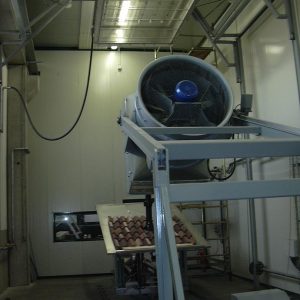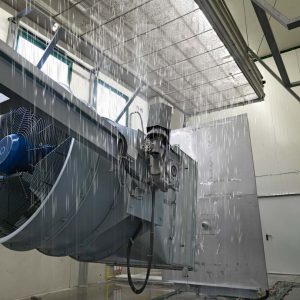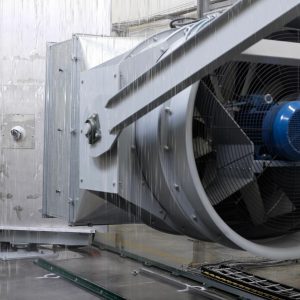Groppalli In-house laboratory is equipped with technologically advanced testing machines and toolings to test the properties and the performances of the components of chimney systems for the evacuation of combustion products and the supply of air of modern heat generators.
Groppalli engineers carry out experimental tests developing new prototypes and verifying the conformity of the company products with the requirements of the European and national harmonized standards.
Several testing rooms equipped with different machineries make up the laboratory:
The Wind tunnel room: where the wind generator, the rain generator and special sample-table are located for the study of the effects caused by weather agents on vertical and horizontal terminals. Here we study the aerodynamic behaviour of the terminals, the recirculation of the combustion gases in suction by tracer gas, the rainwater access, the flow resistances with and without wind. The wind tunnel is also equipped with brackets and hydraulic connections that allow the installation of the customer's heat generators combined with Groppalli’s exhaust gases/air intake pipes: this way it is possible to check the combustion parameters of the boilers at different wind directions and intensity.
Climatic chamber to carry out tests of low temperatures resistance for vertical and horizontal terminals.
Vertical wall equipped for the evaluation of the mechanical behaviour of ducts for heat generators (compression tests, tensile tests, non-vertical installation for the evaluation of distance between supports, mechanical resistance of the supports, etc…).
Special equipment for the materials properties testing and the artificial accelerated ageing of plastic and vulcanized materials.
Equipment with vertical air shaft for experimental tests of cyclic thermal stress (also in combination with mechanical loads) on innovative metal and / or plastic chimney systems, for the evaluation of the temperature class, the pressure class and the distance from flammable materials.
Test equipments for the assessment of the soot-fire resistance and of the level of adhesion of the surface layers of exhaust pipes.
Hydraulic test circuit for domestic boilers with thermal power lower than 35 kW.




